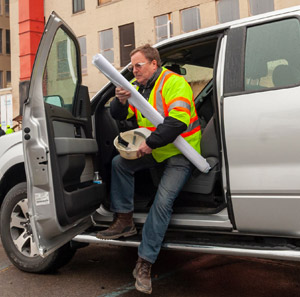Your Michigan Spinal Stenosis Doctors

James B. – Ann Arbor, MI
Actual Patient
Your spine is a column of bones, or vertebrae, stacked on top of one another and cushioned by fluid-filled discs. It’s also the home of your spinal cord and major nerve roots that relay messages from your brain to your peripheral nervous system.
Whether as a result of osteoarthritis or other conditions, some people experience a narrowing of the space around their spinal cord. This change occurs most often in the neck, or cervical spine, and in the back, or the lumbar spine. Some people experience no symptoms, but others experience significant pain, weakness, and other symptoms, which causes them to ask their doctors about spinal stenosis pain relief.
Get pain relief from spinal stenosis and start living your life again. Call 734-796-7555 to schedule a consultation with a Heilman Center pain specialist today.
Get Relief from Your Pain
Complete the form below and we’ll contact you to discuss whether an appointment is right for you.
Common Spinal Stenosis Symptoms
Spinal stenosis can be tough to diagnose because its symptoms are similar to those of other conditions. Ask your doctor about pain relief for spinal stenosis if you have the following ongoing symptoms:
- Tingling in your arms or legs. Spinal stenosis in your neck can cause tingling or numbness in your arms, hands, legs, or feet.
- Pain and cramping. Lower back spinal stenosis pain management often requires managing symptoms like cramping and pain in the legs, especially after walking or standing for long periods. You may notice that your pain eases when you bend forward or sit down.
- Difficulty keeping your balance. Many patients with spinal stenosis report that they have trouble staying balanced while standing or walking.
- Bladder and bowel problems. Compressed spinal nerves can make it difficult to maintain control of your bladder or bowels.
Causes of Spinal Stenosis
Osteoarthritis in the spinal column is the leading cause of spinal stenosis. This happens because patients with osteoarthritis often develop bone spurs or thickening in their spinal ligaments, and these changes cause bones and ligaments to intrude into the space around their spinal column. Other conditions that cause patients to seek out spinal stenosis pain relief include:
- Herniated disc. Cracks in spinal discs can lead to leakage of the soft, pulpy material within the disc, and this material can get into the space around your spinal cord.
- Spinal injuries. Dislocations, fractures, and swelling related to motor vehicle accidents and other spinal injuries can narrow the space within the spinal canal.
- Paget’s disease. Paget’s disease causes the body to produce more bone than normal, and the bone tissue the body generates is softer and weaker than regular bone tissue. The extra tissue and its softness can cause intrusions into the spinal canal.
- Tumors. Some patients develop tumors on the spinal cord, in the membranes surrounding the spinal cord, or inside the spinal canal.
Treatment for Spinal Stenosis Pain
Pain specialists primarily manage spinal stenosis pain with medications, physical therapy, interventional therapies, and surgery. Although spinal stenosis pain often makes patients want to be less active, maintaining your mobility and strength is crucial to spinal stenosis pain management.
Medications
Anti-inflammatory medications, muscle relaxers, anti-seizure medications, and antidepressants can all help provide spinal stenosis pain relief.
Physical Therapy
Working with a physical therapist can help you stay flexible and strong, making you better able to manage spinal stenosis pain.
Interventional Treatments
Steroid injections and other interventional therapies can help ease inflammation and swelling, providing some pain relief for spinal stenosis.
Endoscopic Back Surgery
When other treatments don’t work, pain specialists can use micro surgery techniques to reach the back part of your spinal vertebrae, or lamina, and open up space within the spinal column or correct bone spurs that may be impacting nerves.
Some examples include:
Vertiflex Superion can eliminate the need for major spine surgery for many patients with lumbar spinal stenosis.
the mild® procedure, explained in this 2 minute video.
Talk to Our Pain Specialists
When you visit the Heilman Center for Pain and Spine Care to get treatment for spinal stenosis, you’ll work with experienced back pain specialists who are dedicated to providing the highest standard of patient care. Located in a hospital setting, the Heilman Center is staffed by dedicated nurses, physician assistants, and other medical professionals dedicated to helping you find spinal stenosis pain relief.
If you suspect you may have spinal stenosis, or you’d like to discuss your symptoms with one of our pain specialists, call 734-796-7555 or fill out our web form to schedule a consultation.
